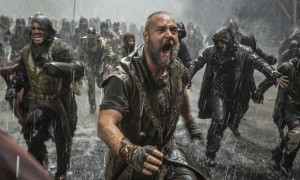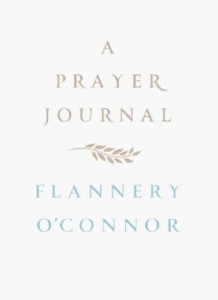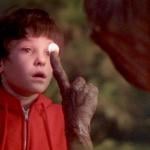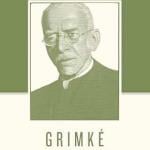One of the things that defines a beautiful work of art, is that – to use sacramental language – it is a harmony of matter and form. The ideas that the artist has to communicate choose the artistic medium that suits them. A brilliant work of art pushes the limits of the chosen medium, exploiting all of its levels of meaning to impact the receiver.
It’s the difference between a painter using all the colors in the spectrum, or just using five or six. And then, also choosing the kind of brush strokes to convey meaning. Van Gogh needed to plop big slashes of paint – a pintbrush wouldn’t have accomplished what he needed to communicate. And then, the artists needs to decide what kind of surface on which to paint – plaster or canvas or pottery or wood, or wtaver. And also using only as much canvas or plaster or wood as necessary – so that there isn’t one inch of the painting that could be altered without altering the effect of the whole piece.
It’s a musician taking advantage of harmony and rhythm and silence and all the octaves on the piano, as opposed to just one or two. It’s a bad fit to compose a piece for the piano that could be delivered with the same impact on a triangle. Some things were written for the horn. They are a different thing – probably a lesser thing – if translated to the guitar.
So, one of the signs that an artist has mastered their artform is that a project can not be translated to any other medium. It was conceived for this particular art form, and in so far as it drew on all of the potentials of that medium, it makes itself a bad candidate to be experienced in another art form.
This is why Flannery O’Connor and Dostoevsky make bad movies. This is why people are always saying that they loved the book better than the movie. What they are really saying is that they loved the cumulative effect of the literary medium, and that they did not find a repeat of that experience in the cinematic medium. We tend to like screen adaptations, because we have fallen in love with the literary characters, and we fill in the spaces of the movie from what we have experienced in the book. (This is probably why I hated Jackson’s LOTR trilogy. I never read the books, and so all I had to go on was a lot of episodic scenes with under-developed characters fighting for goals that were not real clear to me. In other words, the LOTR movies do not stand alone.)
In the same way, I heard a fan of Jane Campion’s film The Piano lampoon the novelized version that was made after the film, for being ‘insulting and easy.’ The movie is much better at being a movie than the book was.
I’ve been having this problem for two years or so, as I have been trying to adapt a screenplay I wrote into a play. It’s a good screenplay. And, by that I mean that I wrote the story to be told through cinema. It has close-ups and visual images, and imagery juxtapositions, and voice-overs, and ambient and off-screen sound cues, and super-impositions, and match cuts….and, none of these are ancillary to the narrative. They are all motivated. I wrote a story that could only be told on the screen. So, now, in trying to “dump” the contents of the story into a play, I am finding that I really have to write another project. Even more than just a difference in technique, the story I was telling in the screenplay – thematically about the universal human striving for immortality – “matches” cinema better than theater. Because, whoever ends up on the screen attains a kind of eternal life. (ie. Charlie Chaplain will always be 36 years old in The Gold Rush.)
On the other hand, I have found that bad books, can make very good movies. The Wizard of Oz is probably the prime case in point. Edna Ferber’s Giant, for another example, has all the literary punch of a Harlequin romance, but it became the story fodder for one of the greatest movies ever made. (I’d go ahead and say the greatest, because I love it so much, but, I don’t want to distract those of you who think Revenge of the Sith was a good movie off the main point here.) Whereas the movie deals with the power of love to save us – albeit over decades of commitment and compromise, the book is basically about a high strung woman flirting with a cowboy. Where the movie carries a side-long critique of societal racism, the book is easy and non-controversial.
Another case in point is Dr. Zhivago. I am in a Dr. Zhivago obsessive phase these days and have been spending way too much time doing things like watching the movie four times to hear what Omar and Rod Stieger had to say about it scene by scene. In terms of cinematography and art direction, the movie is one of the most lovely to look at in cinema history. The director, David Lean, also knew how to work with actors, which, combined with the hauntingest of scores, makes the film very emotionally affecting. But more importantly, the film is about something thematically. A few things actually. One big theme treats the perversion of good things by evil. The A-story is the perversion of Lara by Komarovsky. It is set up against the perversion of the pure intent of the Russian Revolution by the Bolsheviks. A secondary theme, is the way that art allows human beings to weather everything – both joy and tragedy.
Loving all this, I decided to rush out and plunge myself into the book so as to get even more insight into these two wonderful themes.
But alas, the novel by Boris Pasternak is barely about anything. Walking through Beverly Hills yesterday with Flannery O’Connor’s god-child Benedict Fitzgerald, (oh, did I let that slip?), we decided that the bok is flawed because Pasternak was basically a poet and not a novelist. Consequently, he is much more interested in the phrases he conjures up paragraph by labored paragraph, than by the intricacies of weaving a theme into a narrative. He has terribly tortorous metaphors all throughout, like, the following…
“In the hot stillness, the heavy eared wheat stood straight. Neat sheaves rose aboe the stubble inthe distance; if you stared at them long enough tehy seemed to move, walking along the horizon like land surveyors taking notes.”
Huhhhhh? Holy pretentious prose, Batman!
“There the lilies stems were shorter and more tangled; the white flowers with their glowing flowers looked like blood-specked egg yolks, sank and emerged dripping with water.”
Blood speckled egg yolks?! The virtue of a metaphor is to be clearer than the reality you are trying to describe. In this case, I would just say there were some water liles on the pond.
The book is constantly running embarrassed from the most active/exciting narrative beats, preferring to languish in over-wrought scenic descriptions.
Now,, because Pasternak is a Russian, he can’t help saying amazing things every now and then like this:
“Lara was not religiou. She did notbelieve in ritual. But sometimes, to be able to bear life, she needed the accompaniment of an inner music. She could not always compose this music for herself. That music was God’s word of life, and it was to weep over it that she went to church.”
The book is worth reading for the gems like that, that one feels Pasternak kind of just blurted out here and there. But none of these gems are developed sufficiently to say they are the theme of the book.
So, in terms of its emotional power, and subsequently its power to haunt me so that I am growing, the movie is much stronger than the book. The book, being a bad book, gave the filmmakers license to create a new thematic unity from the scattered elements of plot and character and story.
Anybody else think of a bad book that made a brilliant movie?
And now, somebody ask, “But what about brilliant books that have been made into brilliant movies?” I think they are very few. There are some good books that have made brilliant movies – like GWTW or To Kill a Mockingbird. And you’d have to say, that they succeeded as films in so far as they destroyed/perverted the most brilliant elements of the novels as storytelling forms. Where the novels take their time, the movies rush. Where the novels make their impact with number of characters, the film chooses one fourth as many. A film adaptation is a generalization by its nature. This is the opposite of the kind of knowledge conveyed in a novel about particular characters. But, overall, the most brilliant novels fail on the screen.










